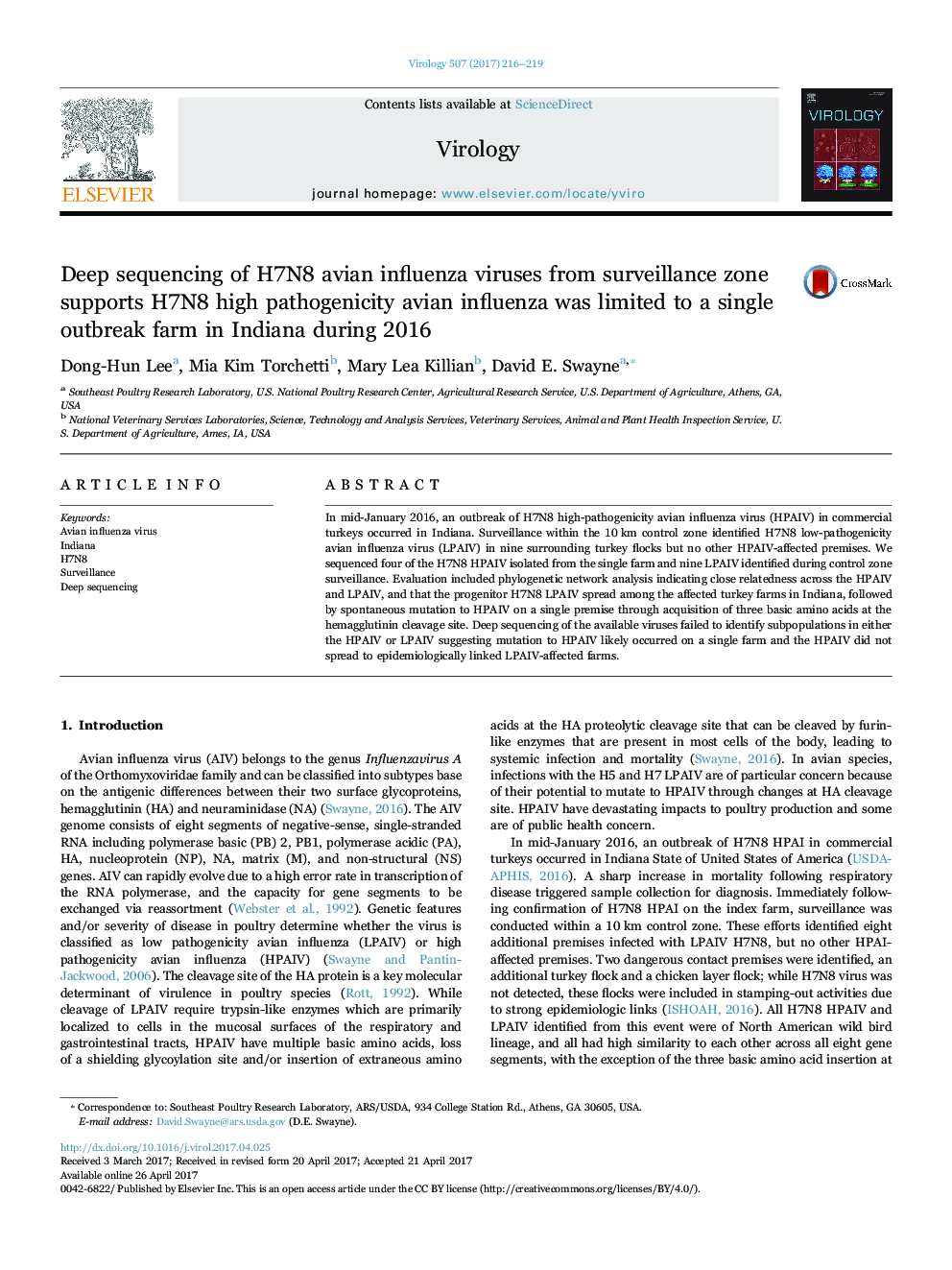| Article ID | Journal | Published Year | Pages | File Type |
|---|---|---|---|---|
| 5674978 | Virology | 2017 | 4 Pages |
â¢H7N8 LPAIV spread among turkey farms followed by a spontaneous mutation to HPAI.â¢H7N8 HPAIV from the index farm and LPAIV identified form control zone were sequenced.â¢Deep sequencing of the available viruses failed to identify subpopulations.â¢HPAIV did not spread to epidemiologically linked LPAI-affected turkey farms.
In mid-January 2016, an outbreak of H7N8 high-pathogenicity avian influenza virus (HPAIV) in commercial turkeys occurred in Indiana. Surveillance within the 10Â km control zone identified H7N8 low-pathogenicity avian influenza virus (LPAIV) in nine surrounding turkey flocks but no other HPAIV-affected premises. We sequenced four of the H7N8 HPAIV isolated from the single farm and nine LPAIV identified during control zone surveillance. Evaluation included phylogenetic network analysis indicating close relatedness across the HPAIV and LPAIV, and that the progenitor H7N8 LPAIV spread among the affected turkey farms in Indiana, followed by spontaneous mutation to HPAIV on a single premise through acquisition of three basic amino acids at the hemagglutinin cleavage site. Deep sequencing of the available viruses failed to identify subpopulations in either the HPAIV or LPAIV suggesting mutation to HPAIV likely occurred on a single farm and the HPAIV did not spread to epidemiologically linked LPAIV-affected farms.
